Swatch Flymagic – Inverted Automatic Movement and First Watch with Nivachron Hairspring (Hands-On)
Swatch is the first to get Swatch Group's innovative paramagnetic Nivachron hairspring, introduced in the Flymagic.

In August 2018, Swatch Group, in collaboration with Audemars Piguet, announced the development of a new, paramagnetic compensating alloy made from a titanium base called Nivachron. If this may sound a bit arcane, Nivachron signifies a real breakthrough in the fight against magnetism. Aiming at optimizing the resistance of the watch to magnetic fields, it represents a substantial improvement for watches, enhancing the oscillator’s regularity and consequently the watch’s precision. We were curious to know how and when Swatch Group would introduce this technology. Well, the wait is over and to our surprise, the first watch to receive it comes from the Group’s entry-level brand. Meet the Swatch Flymagic.
Before we move to the technical part and the presentation of this new Swatch Flymagic, let’s get straight to the point. What Swatch has presented today is an evolution of the Sistem51, with an inverted movement, visible through the dial, still automatic (with the oscillating weight on the dial side), with small seconds and mainly, with a new paramagnetic Nivachron Hairspring. This development involved other companies of the Swatch Group, without surprise ETA (movement production specialist) and Nivarox (the trusted hairspring and assortment manufacturer).
Also, note that the watches presented today are a big departure (technically and price-wise) from the usual production of Swatch. These are sort of statement pieces to introduce the technology, which will later be used across the Sistem51 range.
Innovative materials to fight magnetism
The internal parts of a watch can get magnetized, in particular, the hairspring whose coils stick together when magnetized. Magnetic fields are everywhere in our modern world: closing magnets, computers, cell phones, even household appliances emit magnetic fields that negatively affect the performance of mechanical watches. The worst part is that the effect is persistent, disrupting the functioning of the regulating organ permanently until it is demagnetized in a service centre.
For a long time, watchmakers have tried to protect the movement from magnetism by housing it in a protective cage, usually made of soft iron. This solution is, however, ineffective for high-intensity magnetic fields. More recently research has focused on the movement itself, more specifically on the balance wheel and its environment. Swatch Group, and in particular Omega, has been at the forefront of this research. Omega’s movements have been entirely rethought in terms of design and materials to become non-magnetic and eliminate the residual effects disrupting the progress of the regulating organ!

In this context, crafting the hairspring in non-ferrous material is the primary focus. But there are few alternative solutions to overcome the main weakness of traditional ferromagnetic hairsprings. Silicon is one of these and has revolutionized the watch industry of late. It presents exceptional properties to manufacture hairsprings, being light, hard-wearing, durable, thermally stable and anti-magnetic. However, this technology is available to a limited number of companies only. It was first developed by Ulysse Nardin via Sigatec – a joint venture with Mimotec. On the other hand, Rolex, Patek Philippe and Swatch Group collaborated in joint development with CSEM. More recently, TAG Heuer presented its first watch equipped with a carbon composite hairspring.

Yet, not everyone is a fan of these modern technologies (silicon/carbon composite) and some question whether silicon has its place in a traditional mechanical watch. Others question the ability to restore movements made with silicon hairsprings in the decades to come (without having access to original spare parts). The use of non-ferrous anti/paramagnetic alloys positions itself as an interesting alternative. In 2000, Rolex developed and patented an innovative hairspring in an exclusive alloy of niobium, zirconium and oxygen: the Parachrom hairspring. For Swatch Group, the introduction of Nivachron hairsprings will “allow a considerable reduction in the influence of the residual effect of a magnetic field on the running of a watch, a reduction by a factor of 10 to 20, depending on the calibre”.
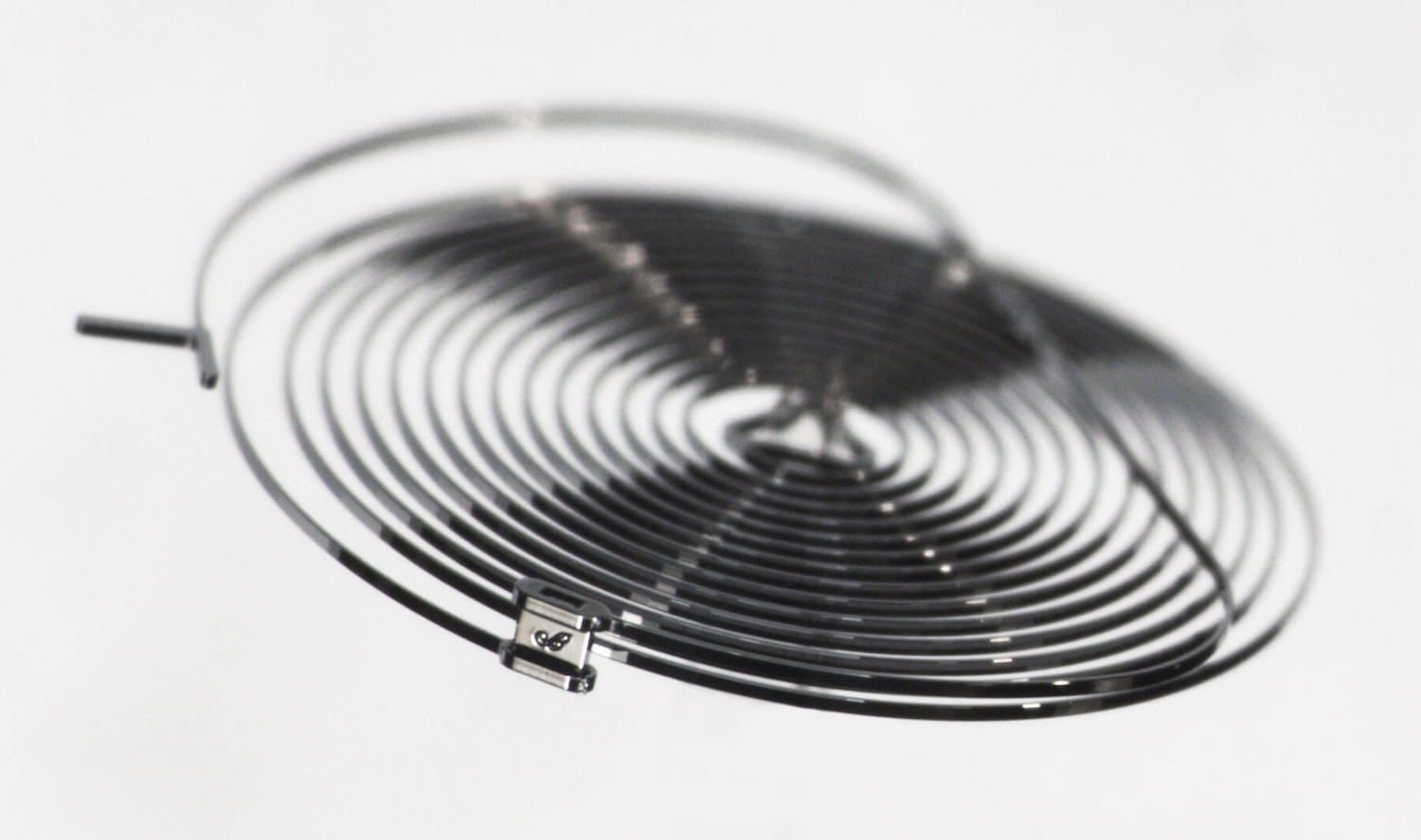
The launch of Nivachron Hairsprings with Swatch is the first step for Swatch Group. In the future, all mechanical watches produced by Swatch Group brands will be equipped with ‘anti’-magnetic properties, either with a silicon or Nivachron balance springs (both patented inventions). This means a substantial quality improvement in terms of precision and reliability for Swatch Group watches. In the frame of the announcement of its 2018 results, the group announced that this innovation will be backed up by a longer guarantee period.
Last but not least, the fact that Swatch Group plans to introduce this technology with Swatch watches (the group’s most accessible mechanical watches) is a statement. It shows that Swatch Group plans to produce this technology in large quantities and at a competitive cost – and actually, the group needs these quantities to make the technology viable.
The Swatch Sistem51 As A Base
Presented in 2013, the Swatch Sistem51 attracted great attention. Originally priced at around EUR 150, the innovative concept is based on an entirely machine-produced movement, made from just 51 parts held together by a single screw. Boasting 90 hours of power reserve, its automatic movement is wound by a transparent bi-directional rotor offering an unimpeded view of its inner workings.
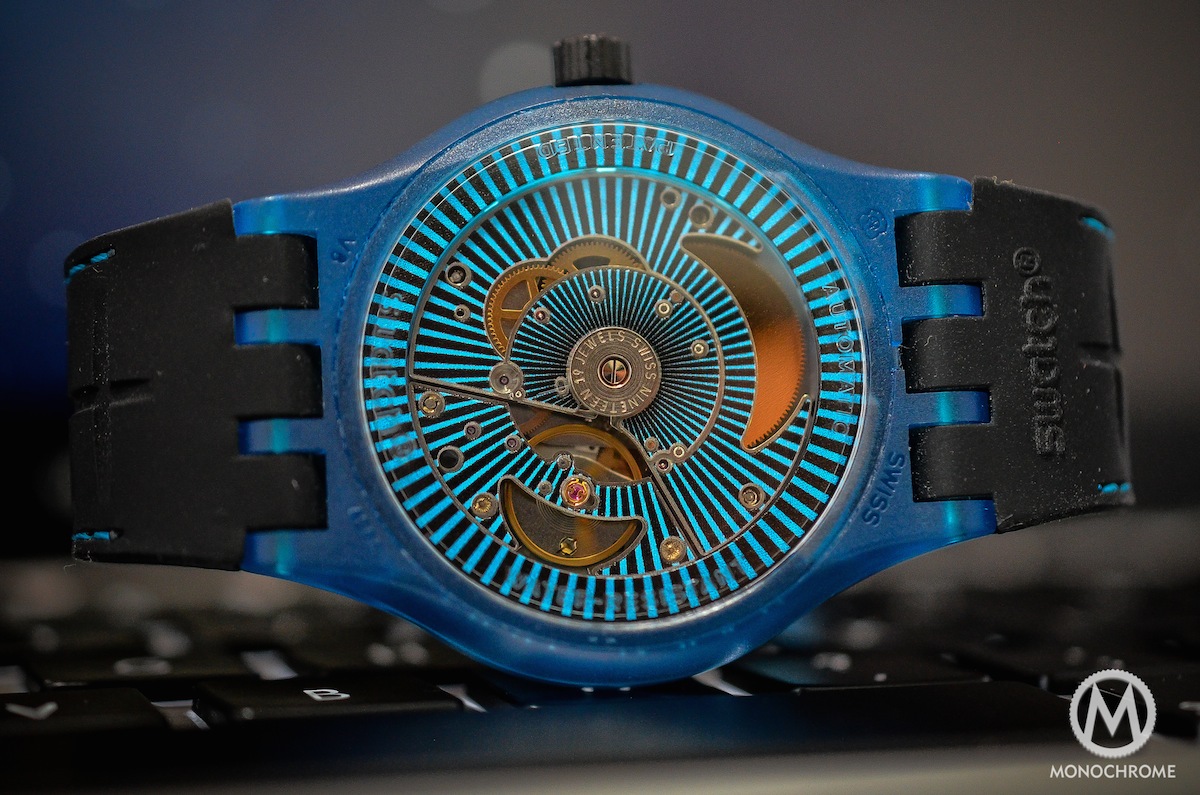
The escapement has no regulator; the rate is set at the factory with a laser, making the manual rate adjustments normally required by a mechanical watch unnecessary. It comes with a quick-set mechanism for the date. Several components feature anti-magnetic properties, including the bridges and plate in ARCAP, an alloy of copper, nickel and zinc. Of course, the Swatch Sistem51 is not Haute Horlogerie, but this super-smartly-engineered watch unites the Swatch cool factor and rather impressive mechanical watch features for under EUR 200!
Swatch Flymagic – Now with Nivachron Hairspring
To introduce its new Nivachron technology, Swatch Group releases three steel limited edition watches called Flymagic, powered by a modified, updated version of the Swatch Sistem51 calibre. In this instance, the movement is inverted with its transparent rotor revealed on the dial side. It offers an unimpeded view of the time with central hours and minutes, and a small seconds rotating anticlockwise (the movement is inverted). Above all, the strategic Nivachron hairspring is on display reducing the negative influence of magnetic fields by a factor of 10-20.
Unlike the regular Sistem51 movement, this version is not made of just 51 parts. There are 15 more components. But just like before, the power reserve is a healthy 90 hours and the precision is of +/- 7 seconds per day.
This development involved other companies of the Swatch Group, unsurprisingly ETA (movement production specialist) and Nivarox (the inescapable hairspring and assortment manufacturer). It will obviously provide a strategic competitive advantage to Swatch Group over companies that do not have access to such technology. Think that 30% of aftersales return are actually related to magnetism.
The price for these 500-piece limited edition watches is set at CHF 1,500. The watches will be available as of 30 April 2019 (the birthday of Carl Friedrich Gauss). Standard Swatch Sistem51 watches with Nivachron hairspring will be launched in September 2019.
More details on swatch.com.

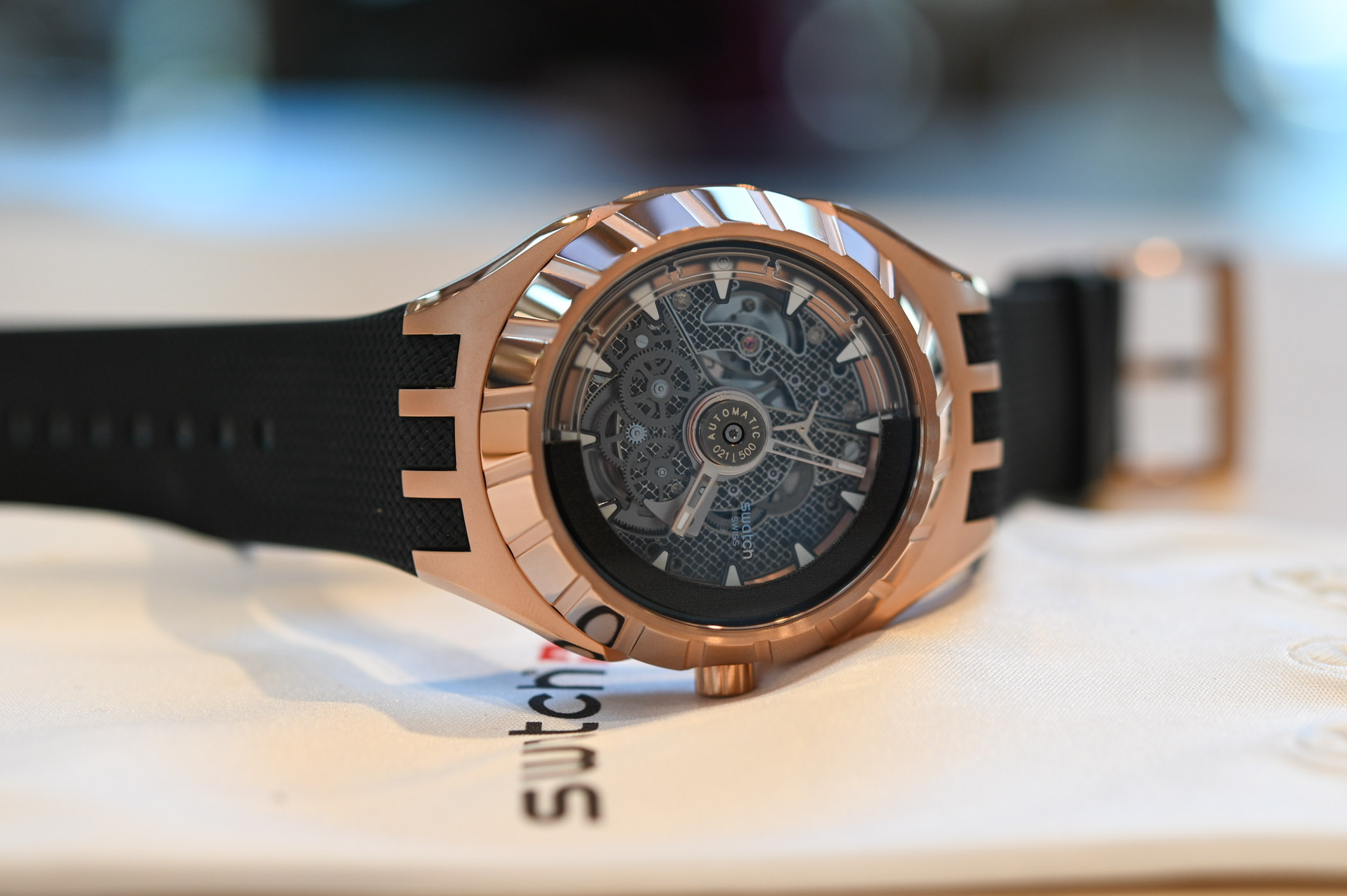

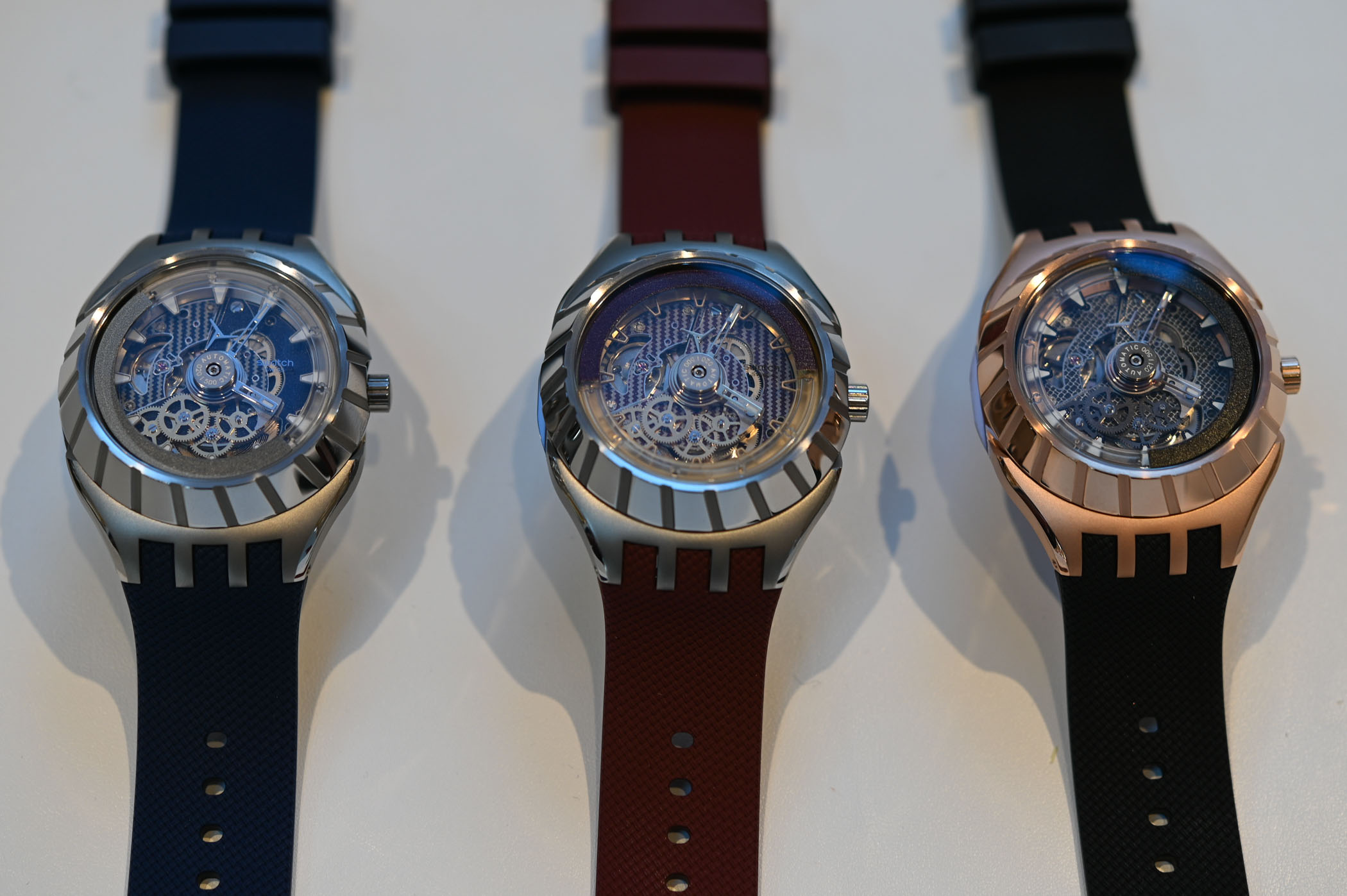
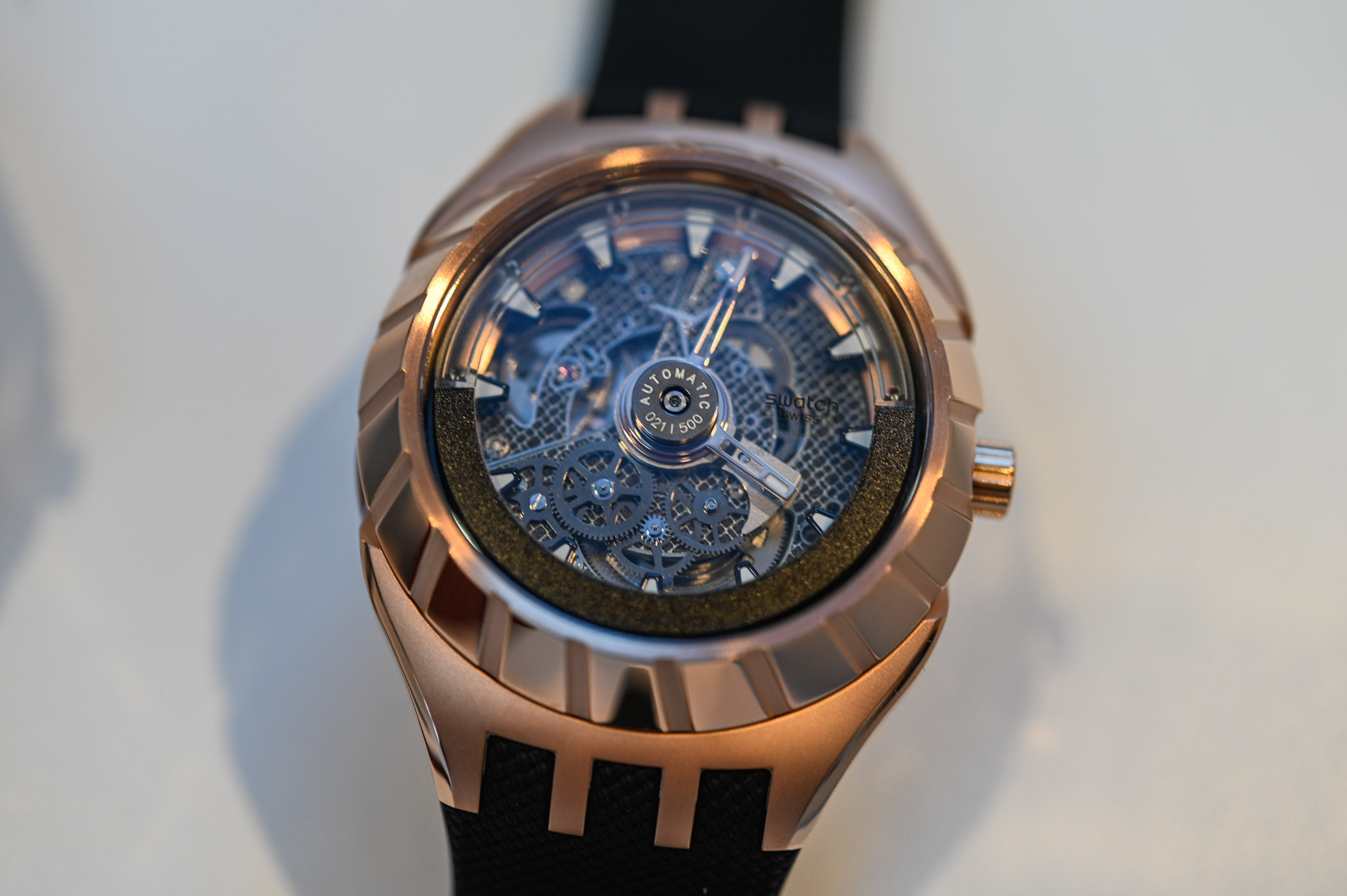
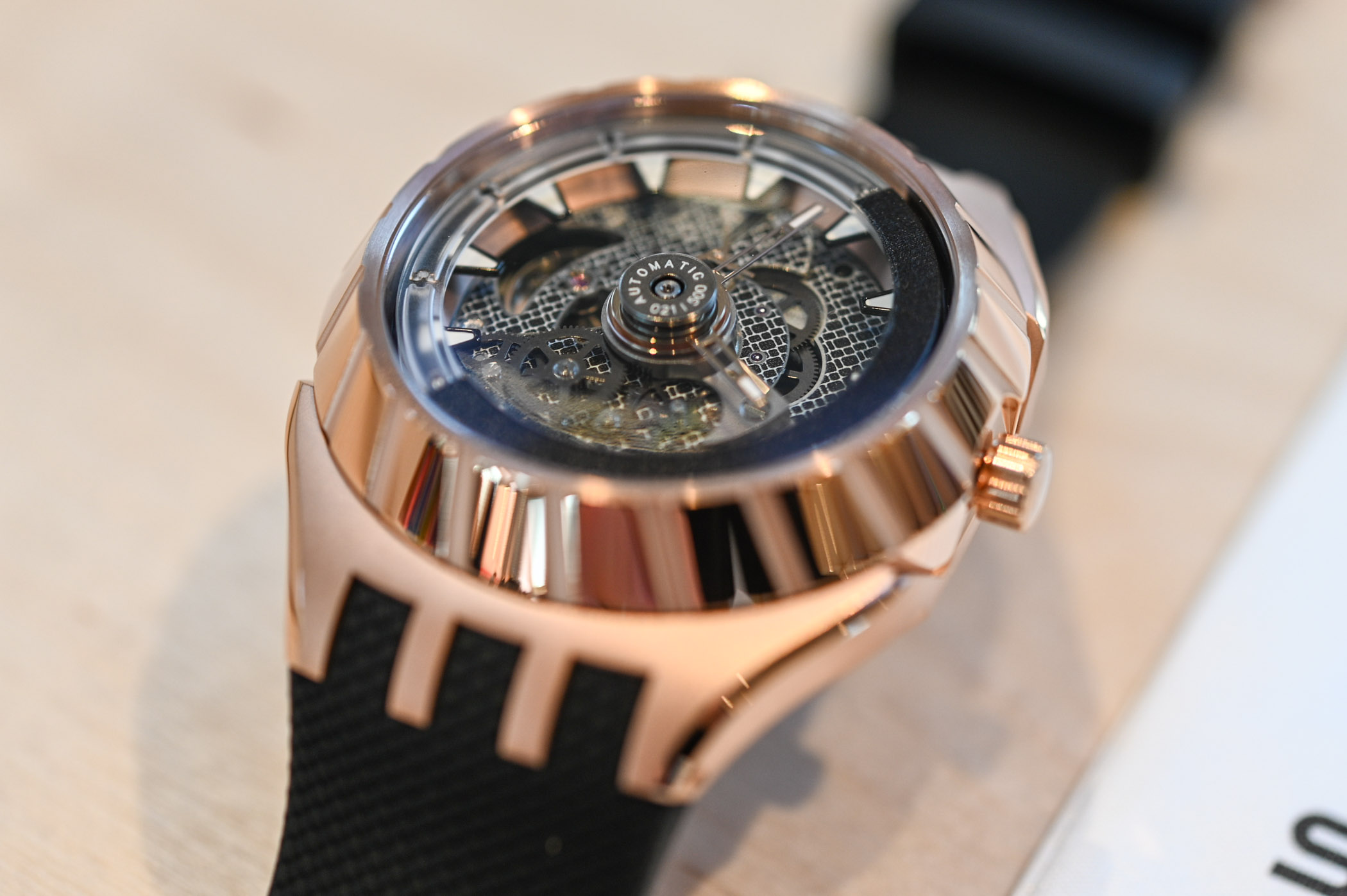
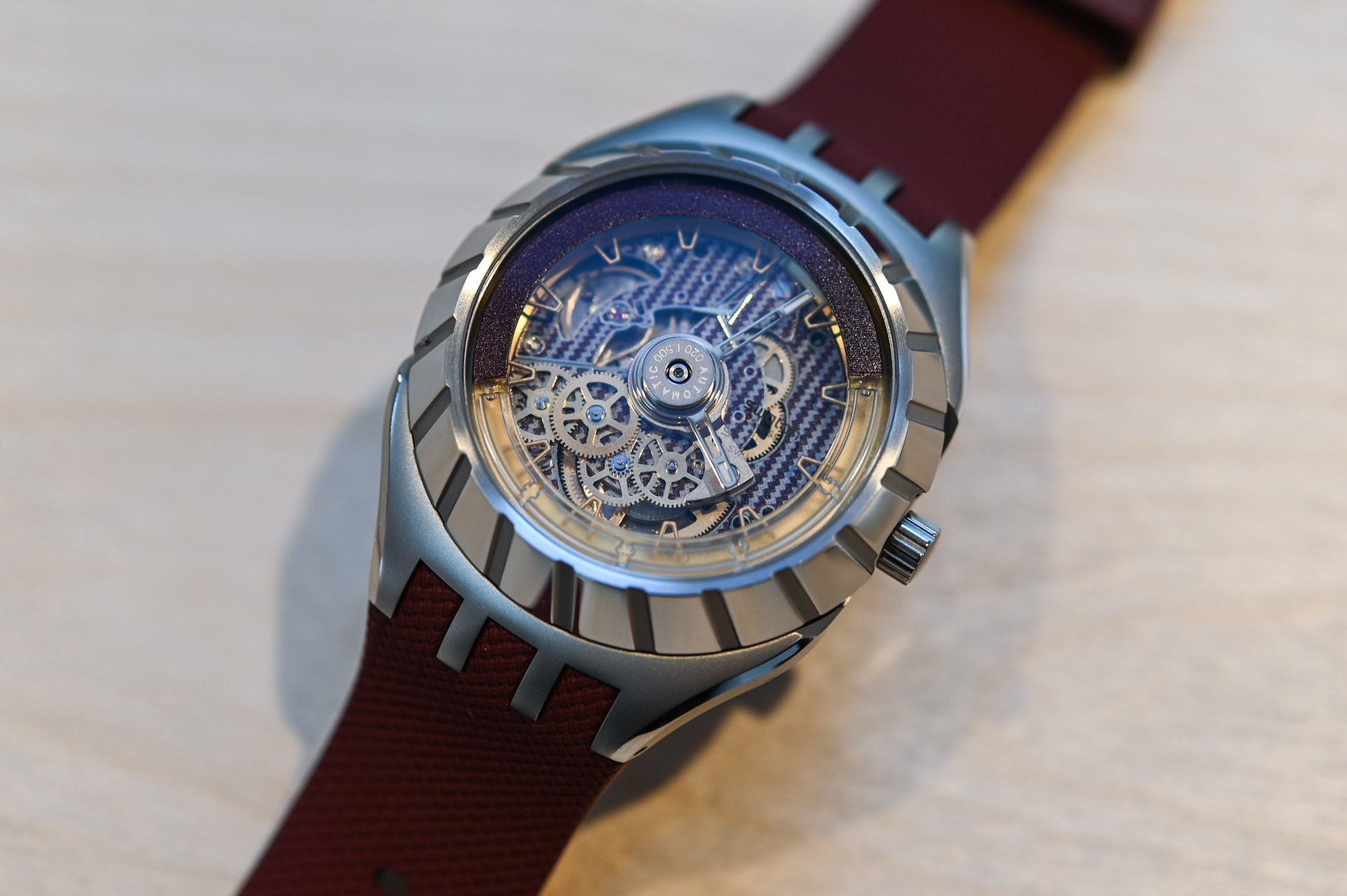




8 responses
Would be cool if it could actually tell the time though.
Sistem51 doesn’t hack.
@chia-Ming correct thanks. Edited!
De verdad ,saber tomar el pelo a buen precio.
Fantastic, cutting edge technology that is affordable! One small drawback , being a watch , to use it you have to look at it and it is pretty hideous.
Maybe you need to wear it inverted as well. It could look better on the other side.
i want one, looking to place a reserve order today
Now (February 2020) some 4 Swatch Sistem51 watches already have this significant consequential advancement in the form of a Nevichron Hairspring.